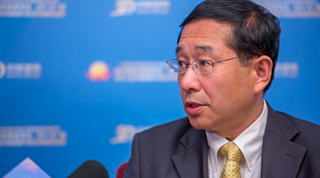Weaned off mega-profits, drugmakers and hospitals need to be kept motivated.
Centralised drug procurement will expand to all provinces, Shanghai CBPMO (Pharmaceutical Centralised Bidding and Purchasing Management Office) announced 1 September. This follows a successful pilot in 11 cities in 2018. Cutting retail prices, the program will help reduce spending on drugs by state-sponsored basic medical insurance (BMI) schemes. Tentative bidding results were announced 25 September, with prices for the 25 drugs covered dropping an average of 59 percent.
The same 25 drugs were included in the 2018 ‘4+7’ pilot, but Shanghai CBPMO has tweaked the scheme with two key changes. The first is that bidding will now run once every 1-3 years rather than annually, strengthening winners’ monopolies. The second change counterbalances the first, allowing each drug to be supplied by up to three contractors, rather than a single winner. If only one firm wins the bid, it will supply 50 percent of the planned total purchase volume. Tenders with two and three winners will be contracted for 60 and 70 percent of the total volume respectively. The 2019 program also includes some military and private hospitals, and introduces a blacklist for non-compliant hospitals and pharma companies.
goals
Centralising procurement under the National Healthcare Security Administration (NHSA) addresses longstanding issues in the pharmaceutical system. From the 1980s to 2006, hospitals bought drugs independently, gifting pharma companies lucrative arbitrage opportunities. Safety and quality issues proliferated among many small-scale manufacturers, compounded by inefficient distribution with numerous middlemen inflating costs. In 2006, Beijing began centralising procurement at the municipal and provincial levels, helping consolidate the industry somewhat but failing to sufficiently reduce prices. The ‘superpowered’ NHSA, set up in the 2018 government reorganisation, has greater leverage over pharma companies to force prices down.
NHSA will also continue consolidating the domestic industry. The scheme prioritises cheap generic drugs that pass expensive bioequivalence (BE) testing. Small-scale, low-end generic manufacturers unable to afford BE testing will be forced out of the market, helping integrate the industry into a few high-end firms with greater market share and stronger R&D capacity.
Central purchasing also helps curb corruption by speeding up separation of pharmacies from public hospitals, says Liao Xinbo 廖新波 former Guangdong Health Department vice director. As drugmakers can no longer pay doctors kickbacks to raise sales, it will help reduce over-prescription and clinical drug abuse, and prevent false insurance claims.
risks
While central procurement of expensive drugs will help shrink costs for BMI schemes and patients, aggressive price cuts may discourage innovation. In May 2019, 14 provincial pharma industry associations made a case against ‘one-size-fits-all’ rollout of central procurement. Slashing costs, they argued, deters investment in research and innovation. They also warned against a race to the bottom, opaque tendering processes, and monopolies.
Hoarding is another issue. Bidding competition and price ceilings help drive prices down, but manufacturers and hospitals are known to collude in price-fixing. Some patients cannot access drugs in the program because firms have stopped selling them or hospital-affiliated pharmacies refuse to carry them.
Centrally selected drugs may also conflict with practitioner and patient preferences, as with the essential drug regime. Since hospitals are required to prescribe centrally procured drugs when applicable, patients find it hard to access substitutes.
implications abroad
International pharma firms are hesitant to cut prices, unsure how much they will benefit in return. In 2018, only 2 of 14 international tenders won bids. In 2019, seven overseas manufacturers made the list, cutting prices more aggressively to secure much greater purchase volumes. Indian generic producers are in the best position, as Beijing has tacitly agreed to improve their market access following high-level trade discussions and meetings with Modi and Trump. The so-called ’pharmacy of the world’, India has a strong comparative advantage thanks to its abundant raw materials and an army of highly skilled technicians. By eliminating the need to market to hospitals, the program has removed barriers for Indian firms, according to Cai Jiangnan 蔡江南 China Europe International Business School.
The program also benefits domestic generic makers, penalising overpriced imports of off-patent originators. Imported patent drug prices have fallen. International firms are changing their marketing strategies to compete with domestic generics, but will find it increasingly difficult to dominate.
outlook: policy spill-over
State-run procurement will likely expand to other healthcare sectors. The Vaccine Administration Law, passed 27 Jun 2019, nationalises procurement of mandatory vaccines. Volume-based procurement pilots for medical devices are underway in Shandong, Anhui, Jiangsu and some cities. Beijing is also pioneering a bold reform to centralise procurement and scrap markups on medical consumables in over 3,000 public hospitals, projected to save C¥500 million annually.
Rollout of national drug purchasing will also speed transformation of the ‘two-receipt system’ (set up in 2016 to simplify distribution) to a ‘one-receipt system’. Pilots are underway in eleven provinces, allowing hospitals to pay producers directly, with distributors only charging delivery fees.
Helping improve accessibility and affordability of healthcare services, these reforms are overdue and will be widely welcomed. Analysts remain alert, however, to end-running of safeguards by providers, and failure of the system to satisfy consumer preferences and maintain innovation.
what are the experts saying?

Wang Yongli 王永利 | Neptunus Group chief economist
Veteran banker Wang spent 25 years at Bank of China, rising to vice chief executive before resigning in 2014. He joined Neptunus Group, a private pharmaceutical giant in Shenzhen, as chief economist in early 2019. He has been outspoken about drug procurement and circulation issues. For him, to correct the problems, further reforms based on nationally or locally centralised drug procurement should focus on detailing rules and expanding scope.

Shi Lichen 史立臣 | Dingchen Consulting founder
Shi has had a long career advising pharmaceutical firms on their marketing strategies, and is a prominent health policy commentator. Shi argues major producers will benefit from central procurement, but smaller firms will struggle to deliver and market their products.

Cai Jiangnan 蔡江南 | China Europe International Business School professor
After academic and practical experience in health policy in the US, Cai returned to China in 2012, taking an economics chair at the China Europe International Business School. He hosts forums on healthcare reform, and helped draft Shanghai’s 2018 healthcare service industry policy. Cai considers centralised drug procurement a success, but cautions against extreme price reductions for fear of harming innovation.
context
30 Sep 2019: NHSA and eight other agencies jointly released ‘Implementation opinions for nationwide roll-out of centralised procurement schemes’
25 Sep 2019: tentative 2019 bidding results announced
1 Sep 2019: Shanghai Pharmaceutical Centralised Bidding and Purchasing Management Office releases 2019 procurement policy
4 Jun 2019: State Council decides to roll out the procurement scheme nationwide by end 2019
18 Jan 2019: State Council issues ‘Plan for piloting centralised bidding, procurement and utilisation of pharmaceuticals in 11 cities’
January 2019: NHC and NHSA sets centralised procurement as a 2019 priority in their annual work conferences
7 Dec 2018: NHSA announces the bidding results of the ‘4+7’ pilot
15 Nov 2018: Sunshine Medical Procurement All-in-one Online Platform publishes the ‘4+7’ pilot plan
14 Nov 2018: Central Deepening Reform Commission approves the plan for a centralised medicine procurement pilot
1 Nov 2018: centralised procurement written into the second draft of the Basic Healthcare and Health Promotion Law
August 2018: Hu Jinglin 胡静林 director-general of the newly formed NHSA announces the first pilot program in which a government-led group procures a set amount of drugs, when visiting Sunshine Medical Procurement All-in-one Online Platform in Shanghai
June 2015: the former National Health and Family Planning Commission (NHFPC) announces modest policy reforms to the Centralised Bidding Procurement (CBP) process
